皆さん、こんにちにゃあぁ!「Kiki+Koko:Let’s NihonGO!! Online」へ ようこそ! Welcome to Kiki+Koko: Let’s NihonGO!! Online! We’re your guides to Japanese language and culture, Kiki and Koko! And, it’s time, once again, to get out those writing utensils and some form of modifiable surface, because it’s time to practise the same old thing in brand new drag (Another piece of teenage wildlife?) But, seriously, there’s something quite important to you beginning virtuosos who may already feel confident in the first ひらがな五十音, hiragana gojuuon. This is the perfect training for your eventual ascension into the realms of kanji, and even before that, katakana. But, the point is that, you’ll begin to notice further into your studies that the seemingly complex characters of kanji are nothing more than the same elements being repeated in different configurations! We’re helping your brain kinaesthetically get used to reapplying characters you may or may not already know into new configurations that produce slightly different readings, enough to be in their own category. Oh yes, 拗音, youon, is in a league of its own, and we’re glad you’ve joined us and our computer robot friend, QUIZBO™, to ascend to a league above! We’ll be helping you properly write the all-star character combos: 「みゃみゅみょ」!
It’s important to complete these lessons chronologically, not just for the sake of order, but also so that you can properly build upon the previuos knowledge. If you haven’t already become comfortable with at least ひらがな五十音, hiragana gojuuon, and their modified counterparts, we recommend you take a quick step back to the start. It may seem fun or even convenient to cram all of the characters into as few sessions as possible, but for most humans, it’s just not a great method for long-term use. It can be easy to accidentally store the characters and their stroke orders on that short term memory shelf. And, sure, you may have an amazing short-term memory, but eventually, something will bump that precariously placed shelf and it’ll fall off. Rather, it’s important to continue to pay mind to that short term memory shelf, come back and dust off the knick-knacks for at least a few minutes a day, until your brain finally realises, We should probably put these away for safe keeping! They’re too valuable to be knocked into the abyss! And, lucky for you, no matter how much or how little you think you can store in your long term memory, most humans can store a few petabytes! That’s like 1.8 billion floppy disks! That’s right, almost two billion floppy disks. So, you’re pretty capable of memorising Japanese and eventually mastering it. It just takes time, effort, and patience! Don’t rush yourself. Each and every new character and vocabulary word is something brand new to you in some way or another. There’s no need to stress yourself out over something that should be enriching and fun. But, sometimes, it can be difficult to make things enjoyable when you have to figure out a proper game plan, so that’s why we have formulated a way for you to get the most out of your session. (And, if something else works for you, then feel free to contact us! We’re sure someone else may also have the same learning style as you and may benefit.)
Get the most out of your session:
As you write these, we recommend you take the usual steps we mention in the writing section along with a few others in order to get the most out of your study sessions:
- Open up the reading lesson on a different device or in a different window
- Play QUIZBO™’s soundbyte of that specific character (or blend)
- Repeat after QUIZBO™, pronouncing it aloud
- Write the character (or blend) using the stroke order
- Say the character (or blend) aloud once more
- Listen to QUIZBO™’s pronunciation once more to make sure you have it correct
brought to you by 「みゃみゅみょ」, 「まみむめも」、「やゆよ」, and 五十音順

頑張りましょうよ!⭐Lets do our best!!
Now, once you have your reference ready, you can take a look if you should forget how to pronounce them, if or if you’re just making sure your pronunciation is accurate, or if you’re using the previous lessons for differentiation and revision. And, if you’re new, you might wonder who this blue computer gentleman is. This is QUIZBO™くん, our favourite quiz generating robot computer who also functions as a very useful display generator, will be using the latest technology to show you how to write 「みゃみゅみょ」– This will be with the age old device we know as… numbers and arrows. Sure, these methods could seem simple, but after years upon years of methods this seems to be the one that helps people without going to fast or slow. That way it will show each character’s stroke order properly whilst also giving a good view of the actual character’s overall look. And, remember, if you’re having trouble with the step-by-step bits, just have a look at the previous stroke orders to see how each character is meant to look throughout each step of the process.
How to use stroke order
Before we properly begin, we figured it would be best to give you a quick overview on how to read these diagrams. For each character, there’s mostly 3-4 strokes that are written in a specific order. Each number signifies which stroke should come first. Start where the circled number begins and write the stroke in the direction in which the arrow is pointing. If you want to see what each step looks like and what yours should look like at that stage, be sure to take a look at the original related stroke order. It’s time to equip your pencils, grab a pen, take out a notepad, a digital device and a stylus, anything you need to write safely and comfortably. Let’s write hiragana youon!
Let’s NihonGO!!
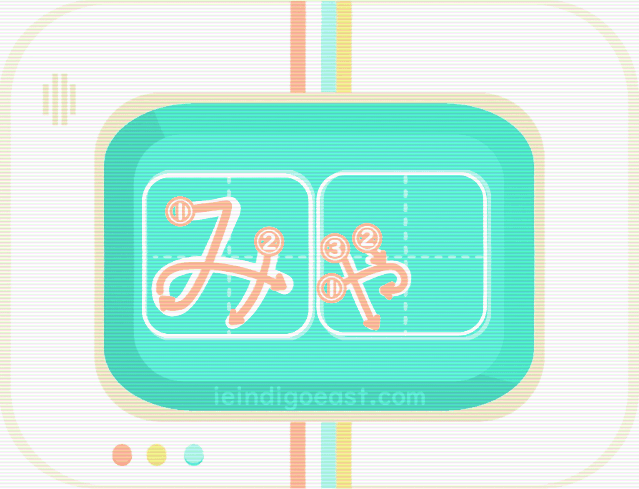 Kiki+Koko’s Helpful Hints:
Kiki+Koko’s Helpful Hints:
Whilst our usual helpful hints tend to be focused on the form of each character, we reckoned it more important to focus on placement, as if you’d like to get a bit more hints about how these characters are written individually, you can always have a look at the previous lesson 8 and lesson 7.
So, with 拗音、youon, you’ll want to focus on size and placement of the 小さいや、chiisai ya, aka:「ゃ」. In handwriting, the 「ゃ」is about a fourth of a regular character. To reinforce this, QUIZBO™くん placed guidelines to show these quadrants which should also help with placement. When writing horizontally, (e.g. left to right), you’ll place it in the lower left corner. However, if you are writing vertically, (e.g. top to bottom), you’ll place it in the upper right hand corner of its own space / the space below the「み」 character in its own width.
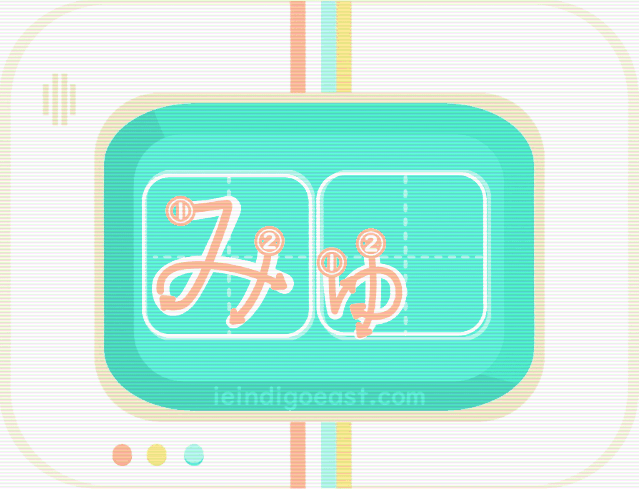 Kiki+Koko’s Helpful Hints:
Kiki+Koko’s Helpful Hints:
There’s not much else we can add that we didn’t mention in the beginning or in the previous lesson, and we’d rather have you apply your time to proper revision and writing practice rather if you already have the previous hints taken to heart. But, again, if you have trouble with these stroke orders on their own, have a look at lesson 8 and lesson 7. But, otherwise, all of the same hints from the previous hint apply to this one. Also, if you’d just like some hints on 拗音, youon, writing in general, we have some useful ones in the previous lesson.
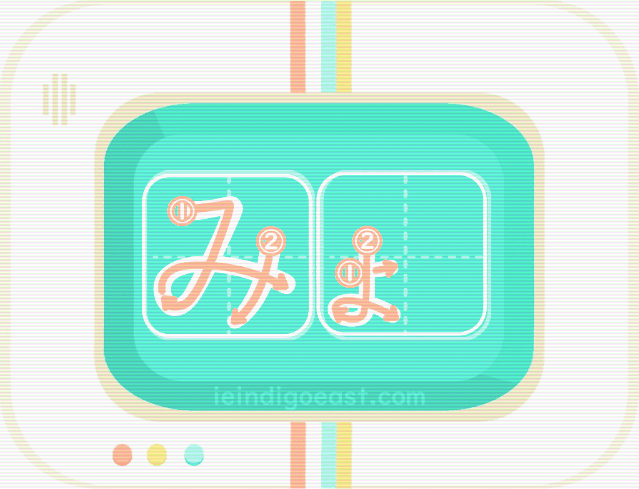 Kiki+Koko’s Helpful Hints: Have a look at lesson 8 and lesson 7. if you’re finding any trouble with these or would like some character-specific hints. But, otherwise, all of the same hints from the previous hints apply to this one. You’ll often see this one and the previous one written with 長音, chouon, as well. So, it can be useful to practise writing 「う」with this or practising with some words that include 長音, chouon.
Kiki+Koko’s Helpful Hints: Have a look at lesson 8 and lesson 7. if you’re finding any trouble with these or would like some character-specific hints. But, otherwise, all of the same hints from the previous hints apply to this one. You’ll often see this one and the previous one written with 長音, chouon, as well. So, it can be useful to practise writing 「う」with this or practising with some words that include 長音, chouon.
And, there we go! That was 「みゃみゅみょ」!We hope that assisted you in properly writing these characters in relation to each other as well as hopefully helping you brush up on the basics when it comes to stroke order! Just be sure that even if you feel like you’re comfortable with the initial 五十音順、gojuuonjun, that you don’t let your comfort slip away before it becomes a part of your long term memory. And, if you’re still struggling a bit with the first fifty, no worries! Just take your time. Not everyone learns at the same pace. And, with time and getting accustomed to your own style of learning and simply internal ways that you make sense of these in conjunction with the resources we provide, things will become a bit smoother. It still takes time and patience, but it can become smoother. But, always be sure to be in a learner’s perspective, always treating each new lesson as important as the last, and never take your previous knowledge for granted. Take it at your own pace, and give it your best go, but treat it as a holiday from the usual. We hope to continue to help you on that journey.
We do our best to give you all of the tools you need with each new lesson and article, and whilst humans usually have a generalised learning pattern, there’s many cases where certain methods help more than others. Maybe there’s a trick you have that’s helped you? Be sure to leave a comment as maybe it’ll help someone else, as well. But, maybe you’re ready for even more information to store in your mental cupboard. You can subscribe to the Electronic Mailing List of Tomorrow, today, found usually at the bottom of the site page or the sidebar on desktop. You’ll get the latest alerts, tools and resources for everything from surviving in Japanese language to our latest projects sent straight to your inbox. That’s articles, videos, podcasts, and more!
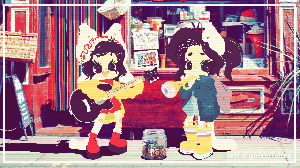
Grooving to the content we’re creating? You can leave a TIP in the TIP♡JAR to keep it going!
(Can’t? No worries! The content is free for everyone! We’re just glad you’re here!! Bring friends if you like~!)
Speaking of which, we want to continue to ensure your steps to success in your Japanese language learning goals, whether you want to just learn a bit for fun or become fluent. You can ensure the continuation of the creation of new and even better content by leaving a TIP in the TIP♡JAR to keep it going. But! You can also support the content when you purchase any artwork from ieindigoeast.redbubble.com (making sure to use our special redbubble link). But, if there’s something that isn’t from our theme, you can always drop Indigo East a ‘Bubblemail’ if you want to specify that you would like it to go towards this content. Or for long or even short term contributions, you can join our Patreon where our gracious host, Indigo East, usually posts behind-the-scenes, sneak-peeks, exclusive content, and more. And, we join in as well! Again, if you’d like to support our survival and the creation of more content to be made available to as many people as possible, you can also share the content! You can easily share via Twitter and Pinterest where you can retweet and repin respectively without even having to type! Gestures like that go a long way, and we appreciate it. We just want to do our best to fulfil our mission.
Thank you for joining us! We hope that you continue with us on this adventure, and we appreciate that you’ve chosen us to assist you on your Japanese learning journey.
Stay Safe!! ♡Kiki+Koko

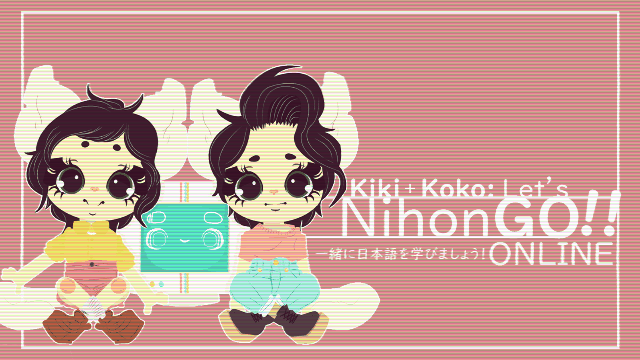
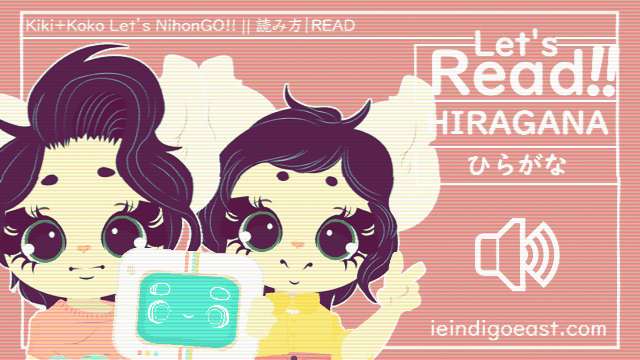
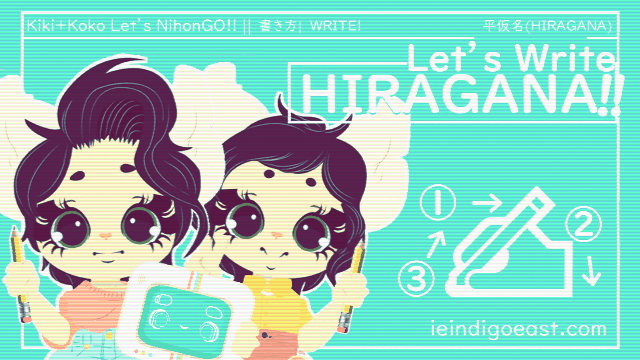













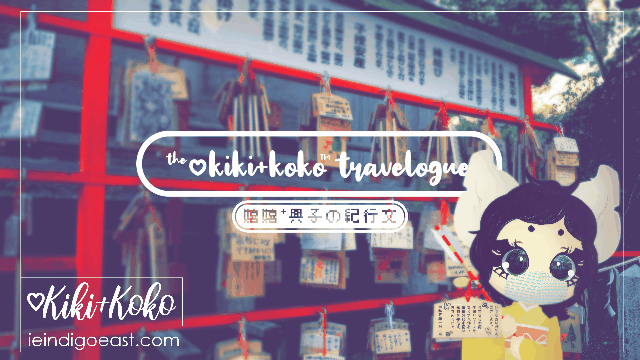























1 reply »